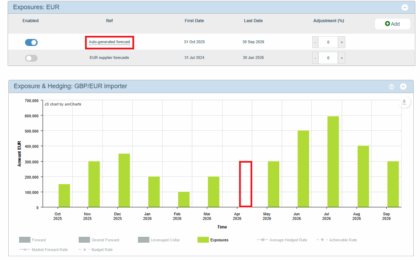While similar, fixed-for-fixed swaps are slightly different from their plain vanilla counterpart – let’s take a quick look at how this stacks up.
Floating-for-floating
Floating-for-floating rate swaps can be used to limit risk associated with two indexes fluctuating in value. For example, if company A has a floating rate loan at JPY 1M LIBOR and it has a floating rate investment that yields JPY 1M TIBOR + 60-basis points and currently the JPY 1M TIBOR is equal to JPY 1M LIBOR + 20-basis points. Given these metrics, company A has a current profit of +80-basis points. If company A thinks that JPY 1M TIBOR will decrease relative to the LIBOR rate or that JPY 1M LIBOR is going to increase relative to the TIBOR rate, it would initiate a floating-for-floating swap to hedge against downside risk.
Company A finds company B in a similar situation, each finding a comparable advantage to a floating-for-floating swap. Company A can swap JPY TIBOR + 60-basis points and receive JPY LIBOR + 70-basis points. By doing so, company A has effectively locked in profit of 70-basis points instead of holding +80-basis points unprotected to volatility in the base indexes.
Fixed-for-fixed
A fixed-for-fixed swap is fairly straight forward. Let’s say an American firm, company C, is able to take out a fixed rate loan in the U.S. at 8%, but needs a loan in Australian Dollars to finance a construction project in Australia. However, the interest rate for company C is 12% in Australia. Simultaneously, an Australian company, company D, can take out a fixed rate loan of 9%, but needs a loan in U.S. dollars to finance a construction project in the U.S., where the interest rate is 13%.
This is where a fixed-for-fixed currency swap comes into play: company C (in the U.S.) can borrow funds at 8% and lend the funds to the Australian company for 8%, while company D (in Australia) can borrow funds at 9% and lend the funds to the U.S. company for 9%. The comparable advantage is equal for both company C and company D: both save 4% they would have otherwise had to have spent without fixed-for-fixed currency swaps.
Take at look at the Interest Rate Swaps Tutorial
If you would like to know more about how to manage interest rate swaps – please check out our Interest Rates Swaps tutorial – we have tried to make it an easy read.





